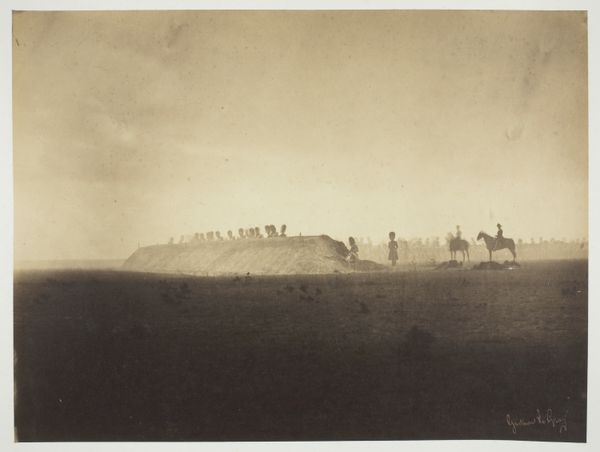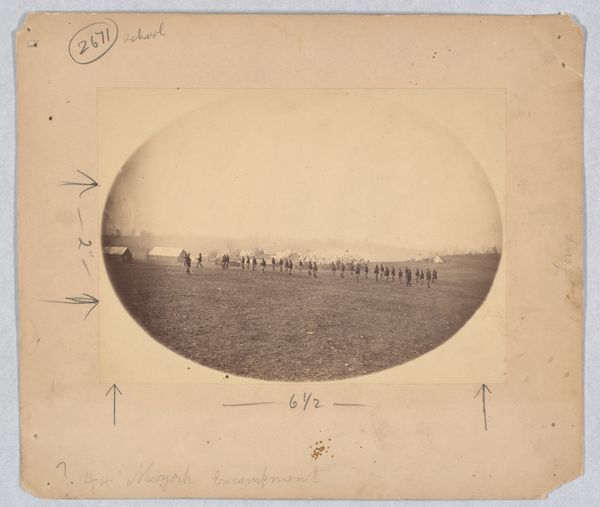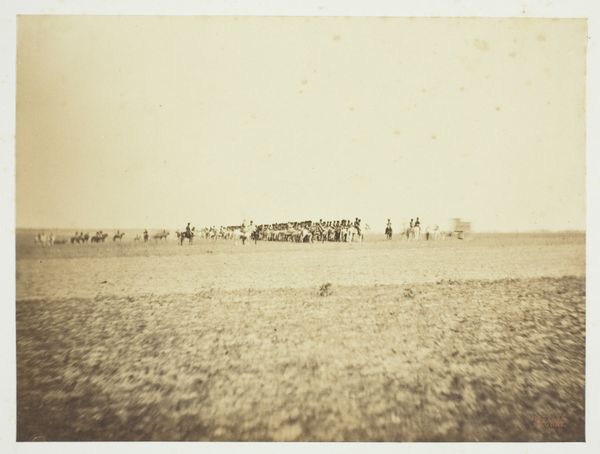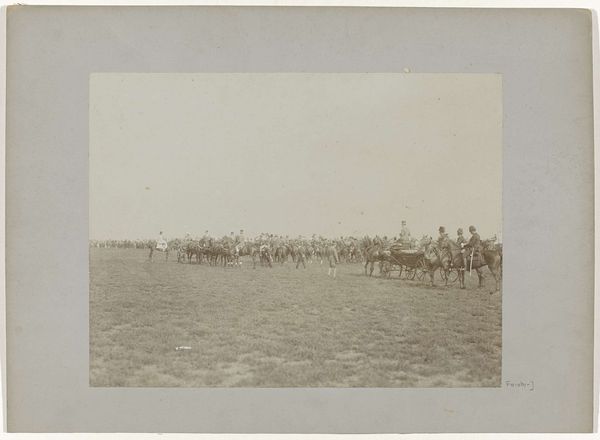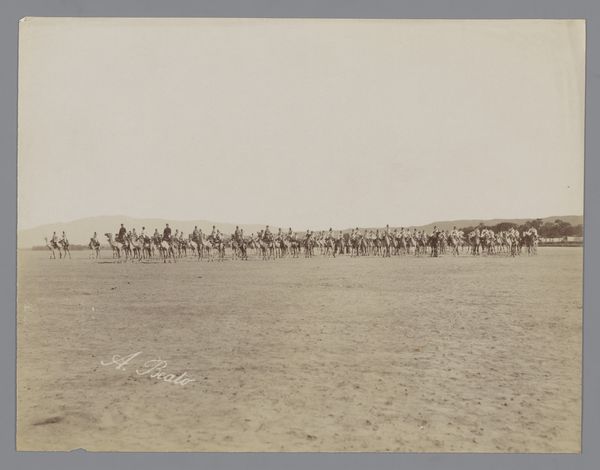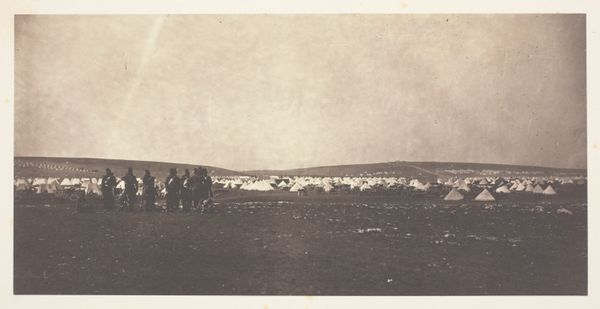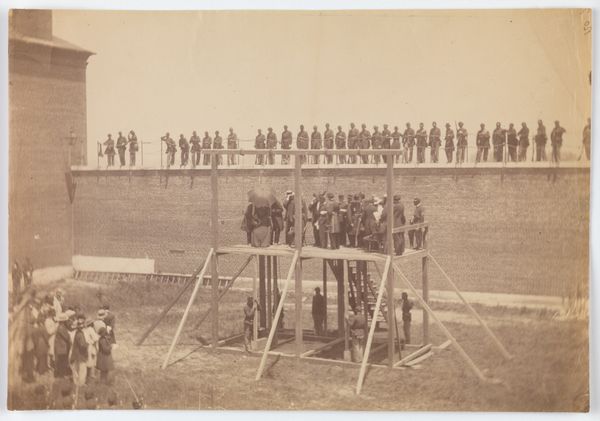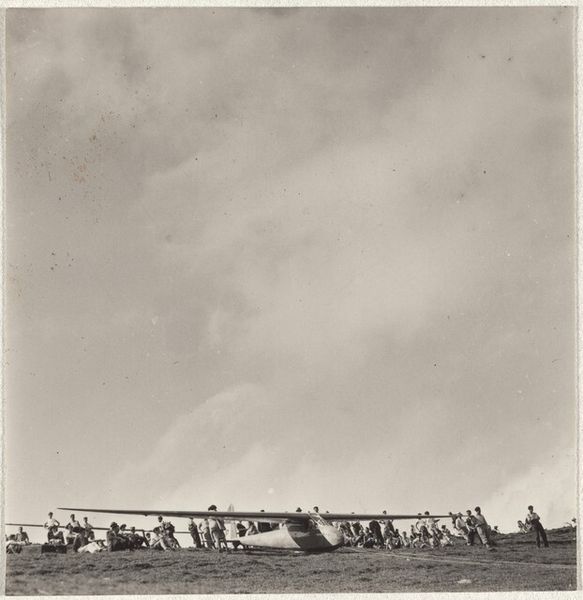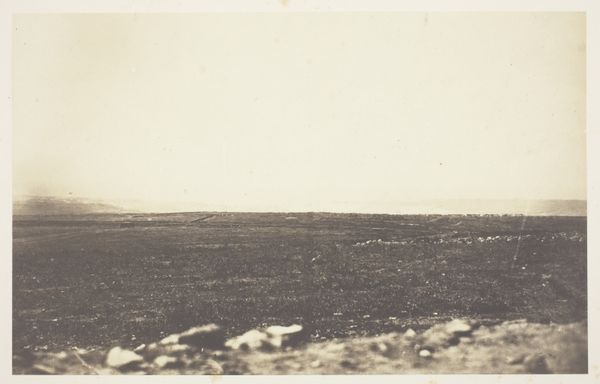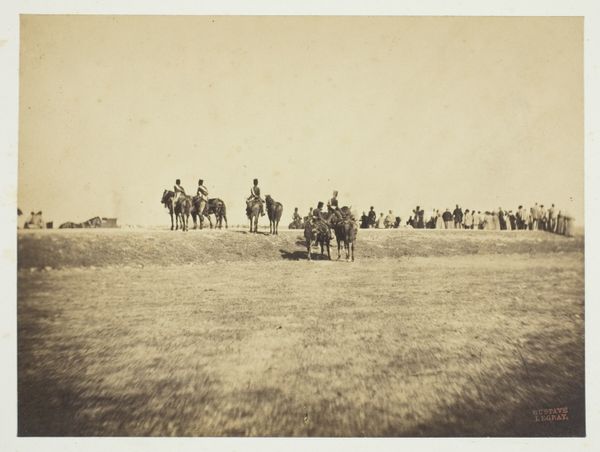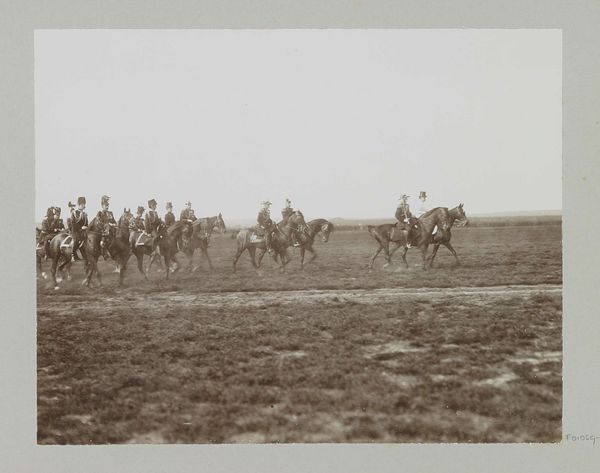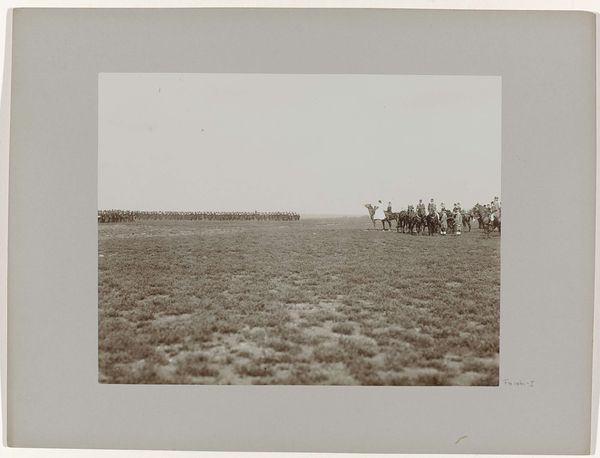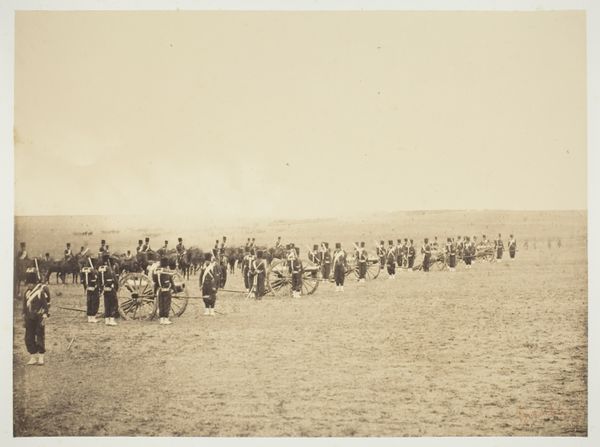![[Cavalry Maneuvers, Camp de Châlons] by Gustave Le Gray](/_next/image?url=https%3A%2F%2Fd2w8kbdekdi1gv.cloudfront.net%2FeyJidWNrZXQiOiAiYXJ0ZXJhLWltYWdlcy1idWNrZXQiLCAia2V5IjogImFydHdvcmtzLzMwMDFiOTM5LTI0MDctNGFhZi04NGQyLWRiNzRmNmFmYWZkOC8zMDAxYjkzOS0yNDA3LTRhYWYtODRkMi1kYjc0ZjZhZmFmZDhfZnVsbC5qcGciLCAiZWRpdHMiOiB7InJlc2l6ZSI6IHsid2lkdGgiOiAxOTIwLCAiaGVpZ2h0IjogMTkyMCwgImZpdCI6ICJpbnNpZGUifX19&w=3840&q=75)
Dimensions: Image: 26.7 x 33 cm (10 1/2 x 13 in.)
Copyright: Public Domain
Editor: So, here we have Gustave Le Gray’s "Cavalry Maneuvers, Camp de Châlons," from 1857. It's a gelatin-silver print, and my first impression is how desolate yet imposing it feels, like looking at a landscape of power. What strikes you most about this work? Curator: The overwhelming presence of sky isn't just atmospheric; it speaks volumes about ambition and empire. Notice how the line of soldiers and horses are so small? Yet, the repetition of figures, like ancient hieroglyphs, projects control over a vast domain, dwarfed by nature itself, or perhaps divine will. It suggests the fragile position of humanity against the backdrop of eternity. What kind of stories might these groupings represent, do you think? Editor: I see your point. The figures seem deliberately placed. Could the groups on horseback represent scouting parties going out to claim land? And the line of soldiers representing their inexorable occupation? Curator: Precisely! The groupings may allude to specific power dynamics. Each cluster operates with unique symbolism; scouting suggesting discovery and subsequent mastery. Do you think this composition is triumphant? Or cautionary? Editor: I think it’s a bit of both, really. The vastness feels hopeful, but that almost faceless line of soldiers makes me feel uneasy. Curator: An apt reading. The image harnesses our own anxieties about progress. Ultimately, this work creates a potent meditation on the passage of time and our ever-evolving relationship with power. Editor: Thanks for helping me to read this powerful photograph through its symbols. It has given me much to ponder.
Comments
No comments
Be the first to comment and join the conversation on the ultimate creative platform.
